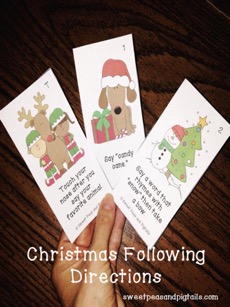
Can you believe Christmas is almost here?! I’m not ready at all! It doesn’t feel much like Christmas here in Florida just yet with our 80 degree weather but hopefully it will soon. Our tree is up, decorations are out, and hubby put lights up outside. We are getting a cold front this weekend (highs in the low 60’s ya’ll!), so I figure I’ll just bundle up and put on some Hallmark Christmas movies and that should do the trick. 😃
Alright, on to the therapy stuff! I’ve been on a roll creating themed following directions packets this year and just created a Christmas one! This packet contains 54 Christmas-themed direction cards as well as 15 coloring sheets. These cards and coloring sheets are great because they target different skill levels and include one-step, two-step, and temporal commands. You can send the coloring sheets home for homework or use them during the session! Fun stuff!
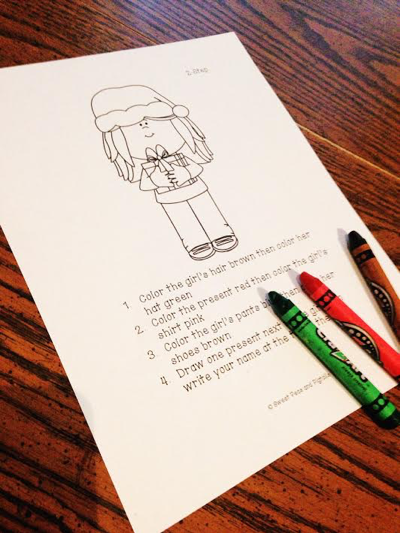
Sled on over to my store to check them out!
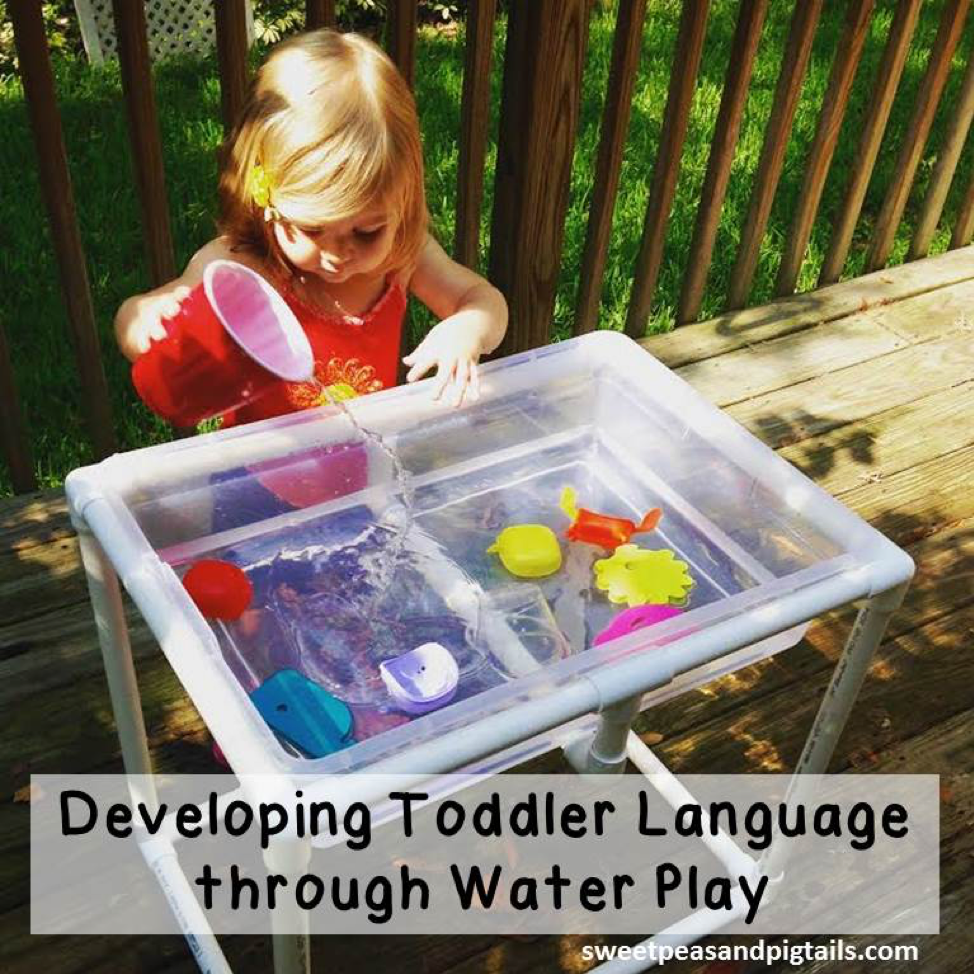
My little girl loves water, whether it’s the pool, the bathtub, her water bottle, or the splash pad. I thought it might be a good idea to get a water table for the backyard. Summer is definitely here and being 7 months pregnant, I’m always looking for fun activities to keep us all nice and cool. I searched the web but many of the water tables I found were listed for more than I wanted to pay. Enter Pinterest. I stumbled across a blog for a DIY water table that would end up costing only around $30 to make. I showed my husband and a few days later he went and bought all the things we needed to make the table and had it built in no time! Thank goodness for handy husbands! 😄
Today was the first day Sweet Pea played with her water table. We went out on the back deck, I filled it up and then threw in some plastic cups of different sizes, a scooper, as well as some bath toys. She loved it!! This water table literally kept her entertained for over an hour! That’s an eternity when you have a toddler!
Ok, so I’m already in love with this table. Not only did it cool us off, but it also kept Sweet Pea occupied. And I just love the learning that can take place during activities like these. I’m a speech pathologist, so I’m always trying to think of ways to foster speech and language development in my own toddler. This water table is great at building language and vocabulary! We splashed, spilled, poured, scooped, squirted, made bubbles, got wet and made the fish swim and float. We also talked about whether the cups were full or empty, In addition, Sweet Pea worked on her requesting skills (“mommy help”) since she couldn’t quite scoop water in the cups by herself yet.
Water play is also good for physical development. It encourages the development of hand/eye coordination as they work on pouring, squirting, and stirring. I think next time I’ll throw in some wooden spoons and some plastic bowls and see what she does with them. It also promotes gross motor skills. Not only did she want to fill the cups with water, she wanted to carry the cups across the deck, down the steps into the grass and then pour the water on the grass. She had to learn to walk carefully and try to figure out how to hold the cups so they didn’t spill. It’s also a great sensory activity as she puts her hands in the water and deals with the temperature (cold water) and the different textures of the toys and other items.
This would also be a fun playdate activity to target social skills. Water play can increase social skills as the children learn to play cooperatively and share. Next time, we will have to invite one of Sweet Pea’s little friends over! 😃
For more fun speech & language activities, check out my Teachers Pay Teachers store here!
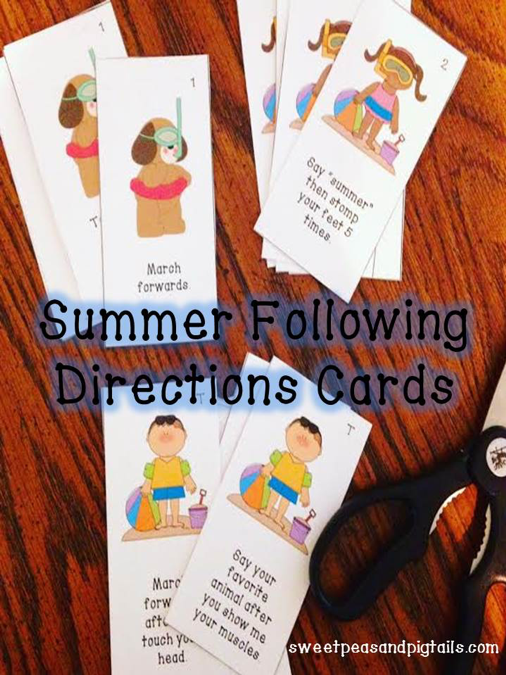
I love themed therapy activities! Summer, especially. I just created this fun following directions packet to use in therapy during the summer months. Over the years, I’ve seen such a need to work on following directions and it’s so hard to think of them off the top of my head. I love these cards because they target different skill levels and include one-step, two-step, and temporal commands. Use the cards in groups, throw them in a cute bag and have the child pull one out, or use them while playing a board game! Not only are there 54 direction cards, but I’ve also included 15 coloring sheets (5 of each type of command)! You can send the coloring sheets home for homework or use them during the session!
Swim on over to my store to check them out!
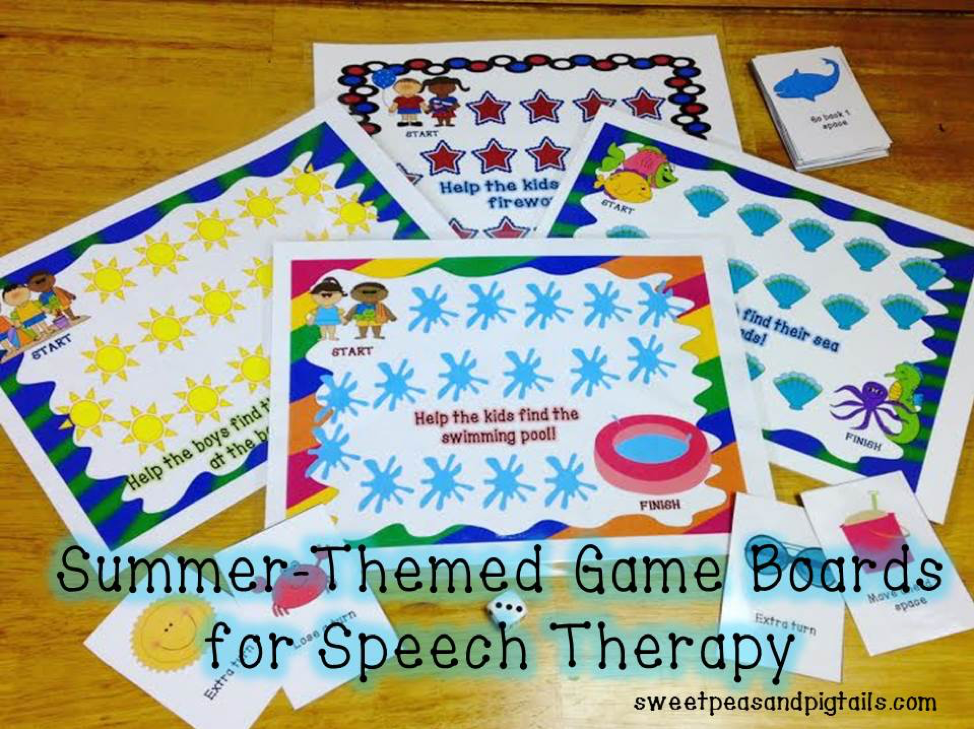
My clients absolutely love to play games in therapy! I can’t even count how many times I’ve played Candy Land and Chutes and Ladders with my kiddos. I definitely needed some new games, so I created four summer-themed game boards that I can use all summer long! What’s great about these board games are that they are open-ended, so you can use them with just about any goal you are targeting.
The four themes are beach, pool, 4th of July, and sea life. I’ve also included beach/pool-themed game cards as well as 4th of July game cards and sea life game cards. All you need is a coin, spinner, or die, and you are all set! I personally like to play with a coin (heads= 2 spaces, tails= 1 space) because it makes the game last a little longer. 😃
To play, use with your own game pieces. Make sure you have a dice, spinner, or coin on hand. Shuffle game cards and place face down on the table. Students should perform a skill before taking a turn at the game (articulation, fluency, language, etc.). Once they have completed their task, have them spin or roll the dice/coin and move that number of spaces on the board. They may then draw a card from the pile of game cards and complete that task (extra turn, move ahead one space, lose a turn, etc.). First one to finish wins the game!
You can snag these summer game boards here!
Winter is here, although it doesn’t feel much like it where I live! Nonetheless, in the spirit of the season, I’ve created a FREE activity for you to use with your kids to help target phonological awareness skills. Phonological awareness is the ability to understand how sounds work in spoken language. Some examples of phonological awareness skills include:
*Segmenting words (clap for each word heard in a sentence)
*Counting syllables (clap for each syllable in the word “rainbow”)
*Blending syllables (tell me what word this is: “com-pu-ter”)
*Segmenting syllables (tell me two words in the word “snowman”)
*Deleting syllables (say “doghouse” without “house”)
*Rhyming
These skills lay the foundation for literacy and research has shown that children who perform well on phonological awareness tasks usually are or become good readers. Students at risk for reading difficulties oftentimes have lower levels of phonological awareness than do their peers. However, there is good news for these struggling students: phonological awareness can be developed through a number of activities, including the freebie I’ve included for you today!
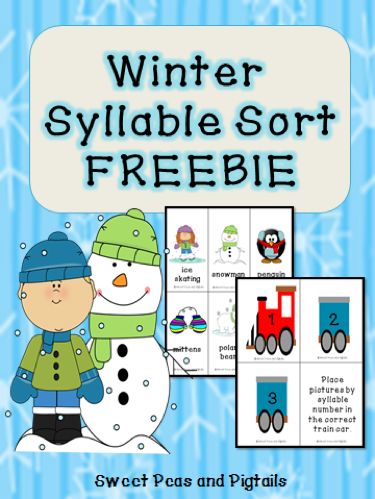
This packet (downloaded at the end of the post) includes 24 adorable winter-themed pictures that are one, two, or three syllables in length. Have your children say the word and clap or tap out the syllables. Once they have determined the number of syllables, they can place the pictures by syllable number into the correct train car. So fun!! These are great because you don’t need a lot of supplies-- just print, laminate, and cut them out.
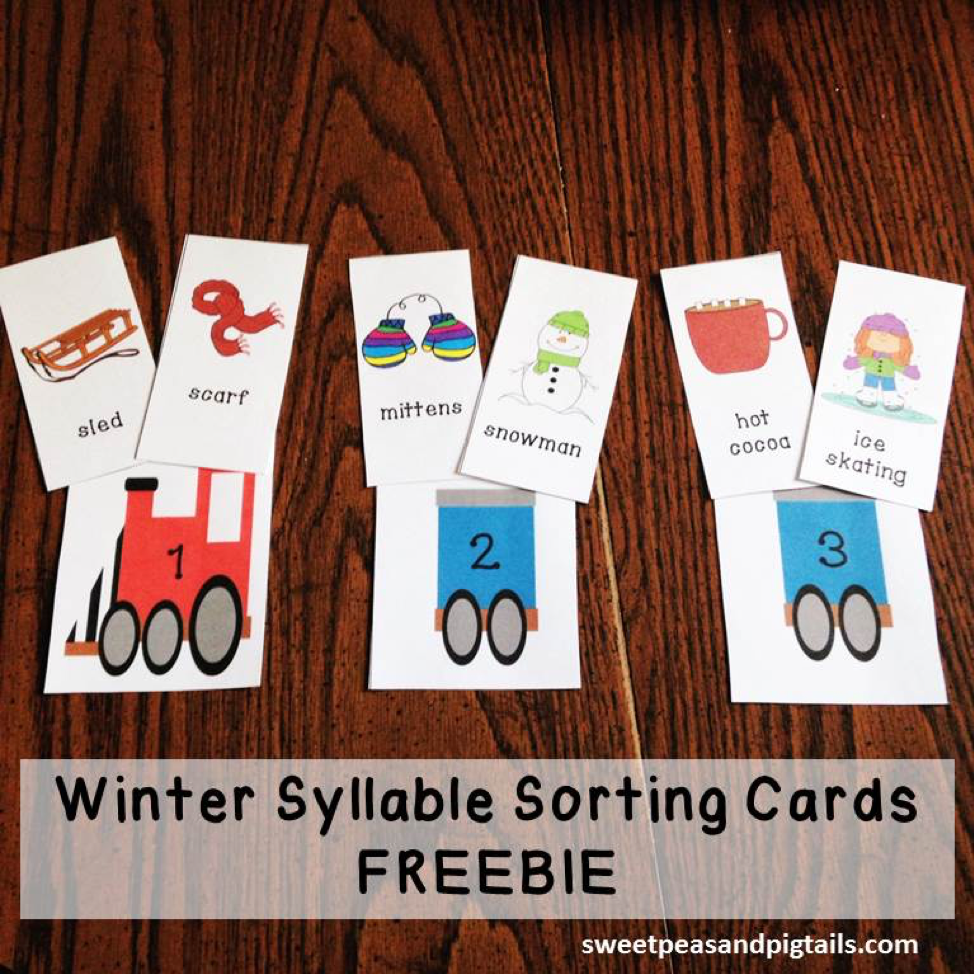
The ability to count syllables in words is important because it increases a child’s awareness that words can be split into smaller parts. It’s easier for kids to start with larger parts of words such as syllables and then progress to the individual sounds that make up the words. Children learn to read by listening to others read to them and then they start to recognize the sounds and start sounding out words. When kids play with words they learn to recognize patterns and use that knowledge to read. This activity, as well as rhyming activities and hand clapping games, are great ways to engage them in word play.
Need more syllable practice? Check out my store for additional products such as Counting Syllables, which includes 72 pictures of 1, 2, and 3 syllable words. For more activities targeting phonological awareness, check out my Phonological Awareness Bundle, which includes four different activities: counting syllables, rhyming, blending CVC words, and identifying beginning/ending sounds.
DOWNLOAD Winter Syllable Sorting Cards HERE
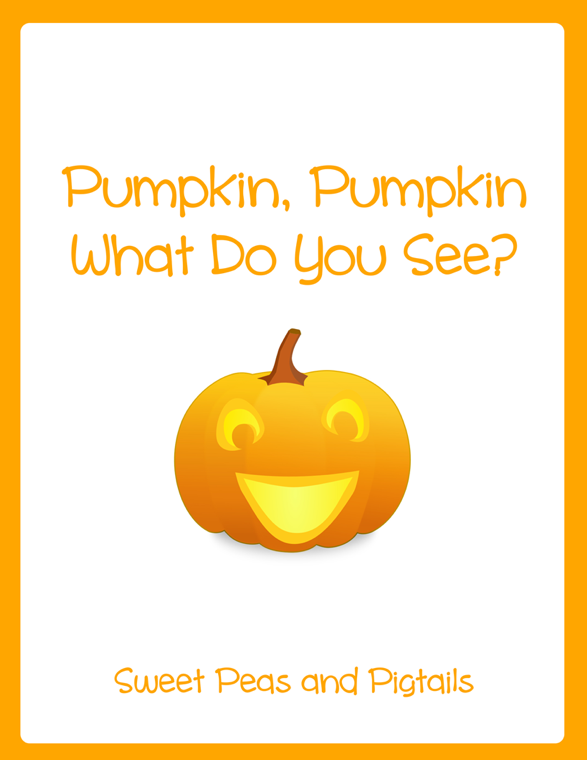
My absolute faaaavorite season is fall. I love the cooler weather, warm apple cider, baking with pumpkin, and all the fall festivities that take place. Since fall is here, I created a little book based off of the classic children’s book Brown Bear, Brown Bear, What Do You See? It’s called Pumpkin, Pumpkin, What Do You See? (Download it for free here!) I thought it’d be fun to read because I LOVE Brown Bear. I’ve used it in speech therapy with the little kids for years and it’s always a hit. It’s predictable, colorful, rhythmic, and great for teaching language! My 13 month old daughter enjoys listening to me sing (yes, you read that right, I sing it to her) this book to her and together we point at the animals and try to make the animal sounds. Check out the video below to see the author, Bill Martin singing the book.
I mentioned that Brown Bear is wonderful at teaching language. Not only does it teach animals and colors, but it also works on comprehending the question “What do you see?” and phrase “I see a _______ looking at me.” Kids usually learn words in chunks. For instance, my daughter understands the phrase “all done” but she does not understand “all” in another context as in “Do you want ALL of those?” So when I read it, I mean sing it to her, I try to say that question and phrase in chunks.
So as you can see there are just so many language opportunities with Brown Bear. Pumpkin, Pumpkin has just as many opportunities! I’m using Pumpkin, Pumpkin, What Do You See? to teach Sweet Pea fall vocabulary (pumpkin, apple, leaf, scarecrow, turkey, acorn, rake, and pumpkin pie). Just like Brown Bear, it will work for teaching colors and give more practice with the question “What do you see?” and phrase “I see a ______ looking at me.” This book can also be expanded and I’ve thought of some WH questions you could also ask older kiddos while reading this book.
Of course Sweet Pea at 13 months cannot answer these questions yet so I’ll just simply explain each picture to her answering some of these questions while I show her the picture. So I’d probably say “That’s a pumpkin and it’s orange! We can go to the pumpkin patch or to the grocery store and get one.” That’s IF she doesn’t flip through the pages quickly. If she’s in a sleepy, restful mood and willing to listen longer, I’ll expand and talk about each picture. I really just follow her lead.
Here’s some pictures of her looking at the book. She really seemed to like it!
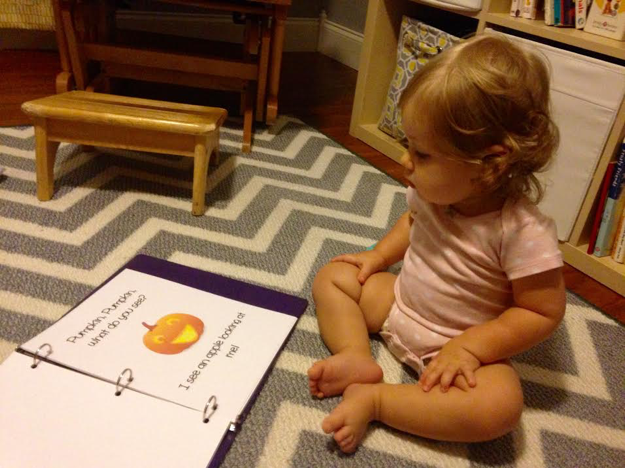
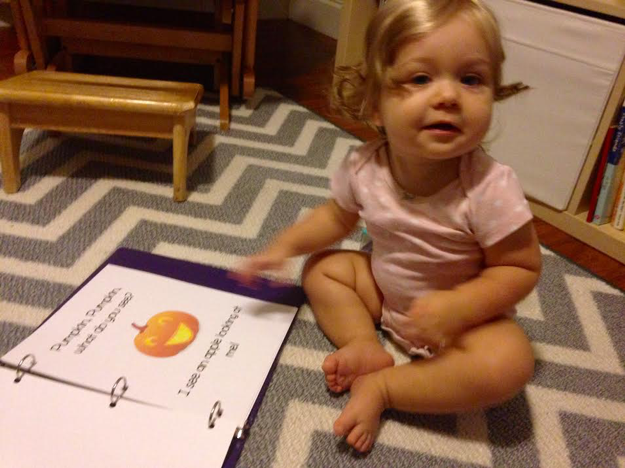
I printed it on cardstock so it is more durable. If you have a laminator, that would work even better to prevent those little hands from tearing it!
I hope you enjoy your little Fall booklet! 😃
Your child is asked to work on his or her speech sound at home. Straight up drill work is not always fun for our rambunctious little kiddos and probably the last thing they want to do when they get home from school is practice their speech sound. Here are some fun ways to incorporate play into their speech practice, and they’ll be having so much fun they might just forget they’re actually working on their sounds!
You know those toy plastic bowling pins and balls? Those are GREAT to incorporate into speech practice, plus it gets your child moving. If you don’t have those, you could always use those Puffs snack containers or something similar. When I was doing therapy, I’d “bowl” with my kiddos. I’d take artic picture cards (ask your therapist for copies, or you can find pictures online targeting your child’s sound) and tape them on the pins, one-two per pin. Then take turns rolling the ball and knocking over the pins. This would be a great way to incorporate the siblings too. Have your child say the word on the picture of the pin that gets knocked over. Odds are they will get lots of practice because they will probably want to keep bowling!
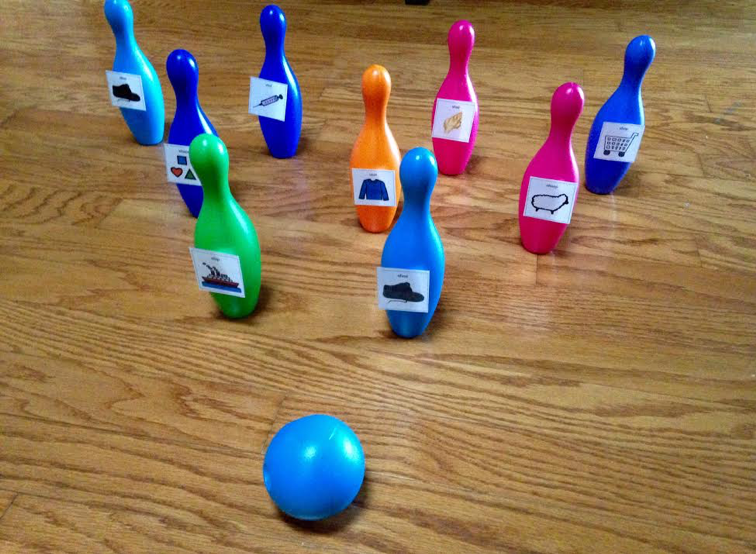
Take a few minutes and take turns hiding the artic pictures around your house. When you find the picture, say the word. To kick things up a notch and make it even more interesting, you can always dim the lights and have your child use a flashlight to find the pictures. My kids at work always felt so important with their flashlight, like some kind of investigator or something.
Does your child like to play games? Incorporate their artic into the game! Have your stack of cards and before your child takes a turn (or even every other turn), they need to say their word five times.

Maybe you are out at the grocery store or running errands somewhere. Have your child think of as many words as they can that start with their sound. So, say they are working on /s/ and you’re at the grocery store. They could say “sandwich”, “salad”, “soup”, “soda”, etc.
Included in this blog is a free /p/ sound printable! You can grab that here. It contains 36 playing cards and targets /p/ in the initial, middle, and final positions of words. Maybe your child is working on /p/. Maybe they’re not. Either way, keep checking back on my site for more free printable sound cards and maybe you will find the sound your child is working on!
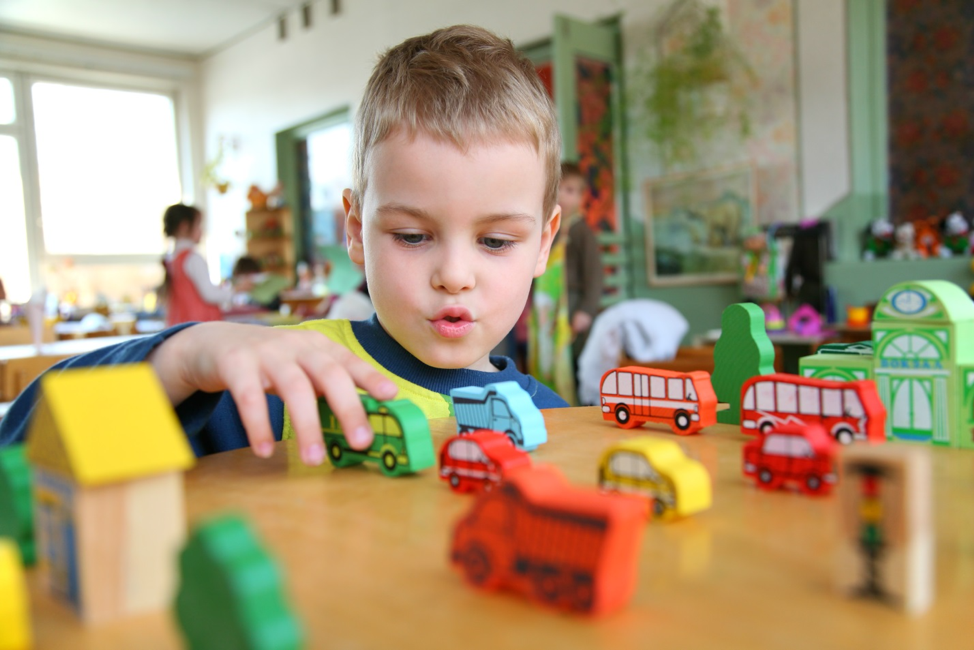
When I assess a child’s speech, I not only look at his or her articulation errors but also their sound pattern errors. As children learn to talk, they use these patterns of sound errors called phonological processes to simplify speech. For example, you might hear your child say “da” for “dog”, “geen” for “green”, or “dob” for “job”. They do this because they can’t coordinate their articulators (lips, tongue, teeth, palate, and jaw) for clear speech. They often simplify the adult model by substituting sounds that are in their sound repertoire for sounds that they haven’t yet mastered. There are many different patterns of simplifications or phonological processes.
What’s a phonological disorder?
These processes are totally normal unless they continue beyond the age when most typically developing children have stopped using them. An example would be if your 4 year old deletes the ending sounds on words (“toe” for “toad”), which is the processes of final consonant deletion. This would be considered delayed because we expect children to stop using that process around 3 years of age.
Check out my phonological process chart which describes each process and provides an approximate age of mastery by downloading it here. (INSERT PDF HERE)
So, how can I tell if my child has a phonological delay or disorder?
If you have concerns, be sure to get your child assessed by a licensed speech-language pathologist (SLP). He or she will evaluate your child’s speech using a standardized assessment. Some red flags to be on the lookout for include:
1. How intelligible is your child?
When children use an excessive number of phonological processes, a phonological disorder is highly likely. If they delete final consonants (“be” for “bed”), delete cluster sounds (“poon” for “spoon”), stop sounds (“poo” for “zoo”), etc. their intelligibility is going to suffer. By the time a child is 2 years old, they should be about 50% intelligible to others. When they are 3 years of age, the percentage increases to about 75% to an unfamiliar listener, and by 4-5 years they should be approximately 90-100% intelligible even if they still have a few articulation errors.
2. Are they deleting initial sounds of words?
The phonological process of initial consonant deletion is not a common one. If you hear your child say “up” for “cup”, “oap” for “soap”, or “ed” for “bed”, you may want to consult a SLP.
3. Is your child frustrated when someone does not understand him/her?
What happens if my child has a phonological disorder?
If your child is diagnosed with a phonological disorder and the speech pathologist recommends speech therapy, the SLP will work on the specific process or processes in error, which will help improve your child’s intelligibility. Targeting the process instead of the individual sound error as you would in articulation therapy usually helps improve the child’s intelligibility at a faster rate if indeed they have a phonological disorder. For example if I assessed a child who deleted final consonants, my therapy goal would probably look something like this:
Patient will produce final consonants on words with 80% accuracy over 3 consecutive sessions.
To target this goal, I’d probably use minimal pair (words that differ in only one phonological element) picture cards like go/goat, bow/boat, bee/beep, etc. and have the child first identify the pictures to see if they can hear the difference and then we’d work on production. After laying out a pair of cards, say the pictures of “go” and “goat” in front of the child, I might say, “Ok Johnny, you tell me which picture to point to.” Then I’ll point to the picture he says. Obviously if he deletes final consonants, he’d probably say “go” for “goat” but then that is where I’d show him what to do to produce that final sound and say “goat”. You want the child to understand that when they say the sound incorrectly (or omit a sound), it actually changes the word’s meaning.
Well that’s phonological processes in a nutshell. Again, if you have concerns about your child’s speech, please consult a SLP near you!
Before Sweet Pea was born, I started building her library. I gladly collected hand-me-down books from relatives and friends and scanned books for my baby registry. I knew I wanted her to learn to love books and as a speech pathologist, I knew just how important reading was, even early on.
I know it’s crazy but I actually started reading to her while I was still pregnant. Not all the time but when I thought of it. Now, at 10 months, Sweet Pea LOVES books. If given a choice between a really cool toy and a book, she’d probably choose the book 80% of the time. She loves listening to her mama read, trying to turn the pages, and pointing at the pictures.
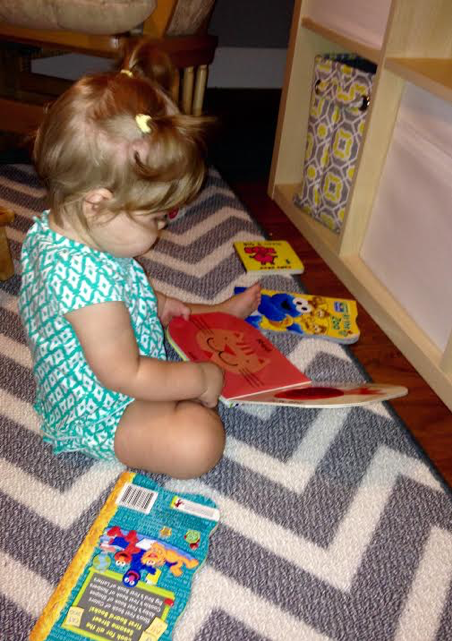
It’s a good idea to start reading to our children when they are young. Kids learn to read by being read to. We as parents are our kids first and most influential teachers and the early experiences with reading provide the foundation they need to become good readers when they reach school. Studies reveal that being read to was the most important predictor of later reading achievement.
When we read to our children, it:
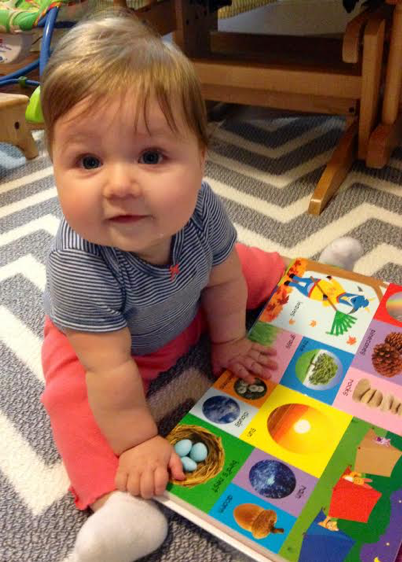
What kinds of books do we read to our babies?
Reading should be both fun and stress-free for both the kids and the parents. Sometimes Sweet Pea wants to skip pages or go through the book quickly. Remember keep it light and stress free. If that happens, it’s ok. Follow the child’s lead. Try choosing nursery rhymes and books with repetitive patterns for the little ones.
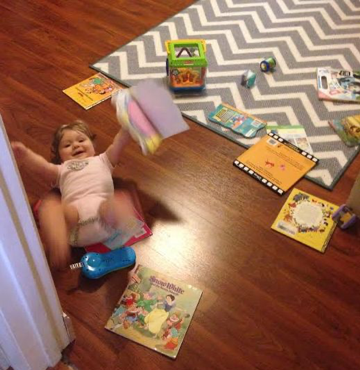
Sweet Pea loves board books with bright pictures and not many words. Some of her favorites include:
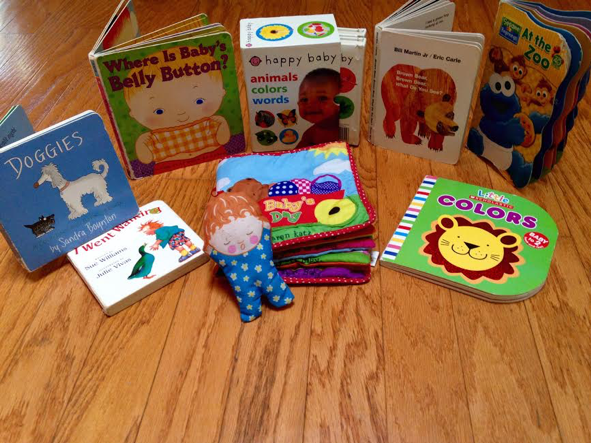
This is such a classic and a great example of a book with a repetitive pattern! Each page features different colored animals and asks the same question, “Brown Bear, Brown Bear, What Do You See?” over and over again. Great for teaching animals, colors, asking and answering questions. Sometimes I make the animal sound and tell the animals “hi” when we read it (when on the purple cat page, I may say “Hi cat” and meow like a cat. Sweet Pea thinks it’s hilarious).
This “counting and barking book” features lots and lots of dogs and their different barks. Sweet Pea loves looking at the different doggies and listening to mama make their different barking sounds.
This was one of the first books I ever read to Sweet Pea. It’s a flap book so it’s pretty interactive and it’s great for asking/answering WH questions. Sometimes I’ll point out the different body parts on myself and Sweet Pea while we read along for extra language building.
This book is very similar to “Brown Bear Brown Bear” with its repetitive phrases and questions. This too is great for asking/answering questions and teaching colors and animals.
Another book by Karen Katz! This was another book I read early on to Sweet Pea. It’s an interactive cloth book featuring the different things baby does during the day. Baby is attached by a ribbon and can move from page to page and “do” the different activities.
This is a touch and feel book that features different colored animals. Another book Sweet Pea started with when she was itty bitty. She loves feeling the “bumpy frog” and the “fluffy bird”. We also (well mama anyways) make the different animal sounds when reading this book.
These are great! Sweet Pea is just getting into these books and likes looking at the real-life pictures. All three are soft touch board books. I like them because the pages aren’t too busy with about four pictures on each page.
This is one of Sweet Pea’s all-time favorites. She loves reading about Elmo and his friends visiting the zoo and looking at the different animals they see. This is a rhyming book so I emphasize the words that rhyme when I read. This book comes along with us wherever we go. I remember we left it at a Disney character breakfast and realized it later on that day. If it was any other book we might have shrugged our shoulders and forgot about it but not this one. We left our Disney hotel and walked about a mile back to the other hotel to get the book which luckily was still there.
Well there you have it! Ten good book choices for babies under the age of one. It was hard to narrow down because there are just SO MANY good books out there! I hope this helped you and I hope your baby enjoys these books as much as mine does.
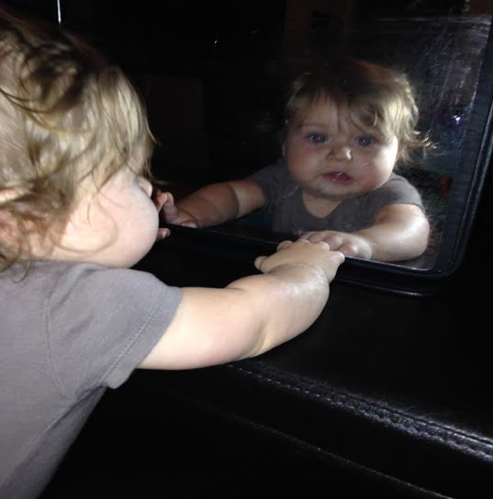
As parents, we absolutely cannot wait to hear our child talk. Around 12 months or so, you may hear your little one say their first true, meaningful word like “mama”, “dada” or “bye-bye”. By 18 months, babies have about 50 words they can say and begin to make word combinations such as “no mama” or “more eat”. It’s what’s called the “vocabulary explosion.” I can’t wait until our little Sweet Pea is old enough to talk to us. In the meantime, we are enjoying every bit of babbling and vocalization she uses!
Even though Sweet Pea can’t talk to us yet, we still play fun games to teach these early words and concepts. Here are some fun things we do:
Mirror fun: I get out my big therapy mirror but any kind of mirror will do. Sweet pea and I sit in front of it and I say “hi” and “bye-bye” and we wave at each other. Sometimes Sweet Pea chimes in and says “iiiii”.
Games with toys: Whenever we start playing with a new toy, I say “hi toy” (dog, book, or whatever the toy is). When we are done with toys and putting them away, I say “bye toy.”
Toy Telephone: Mama pretends someone is on the phone and says “hi” and “bye.”
Food: When Sweet Pea is eating solids, I try to pause after each bite and say, “Do you want more?” Then I give her some more. Sometimes I sign “more” as well. She’s starting to make her own little sign for “more” in between bites. So cute!
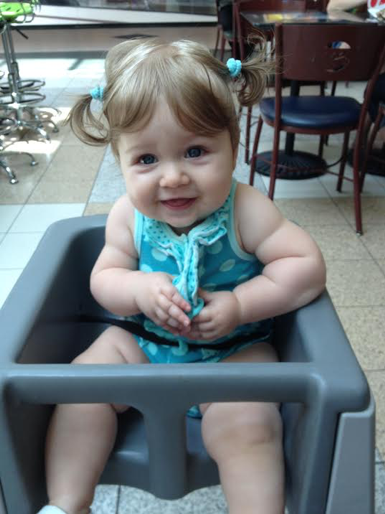
Bubbles: Sweet Pea LOVES bubbles! I always pause and say or sign “more” before I blow another bubble.
Building blocks: We haven’t really done this since Sweet Pea does not really stack blocks yet; she just kind of examines and chews on them! But, you could totally teach “more” while building towers. Give your child one block at a time and wait for an attempt at “more” before giving him or her the next one.
Swings: We try to walk to the community park most nights and Sweet Pea gets to ride on the swing. I’ll stop it ever so often and look at her and say “Do you want more?” Often times she smiles and does her little “more” sign.
Lift the flap books: Sweet Pea really likes books, especially flap books. When you lift the flap, you can ask a no question such as “Is that a cat? No, it’s a doggie.”
Puzzles: Put a puzzle piece where it doesn’t belong and ask, “Does it fit here? No, I don’t think it goes there.”
Food: When Sweet Pea finishes her snack or meal, I show her the bowl and say “all done”. Sometimes I sign it as well.
Bath: After her bath, I say “all done” and take her out of the tub.
Music and movement toys: you can watch for when the music on the toys stop and say “stop”.
Swings: I’ve done this on swings as well. When we are done on the swing, I either say “stop” or “all done.” Sweet Pea absolutely loves her swing rides!
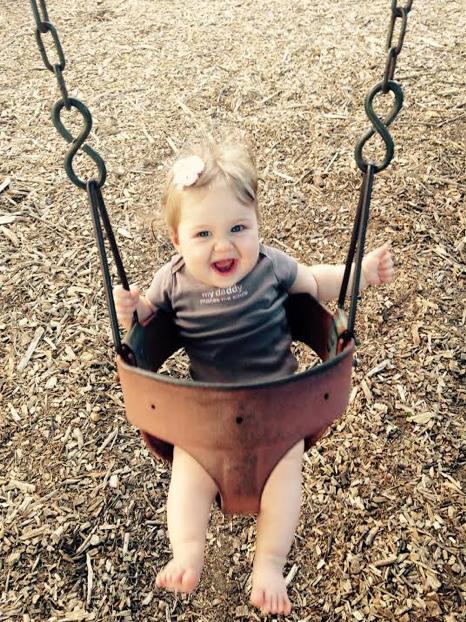
These are just some of the fun things Sweet Pea and I do at home! What are some things you do with your little one to encourage early words?